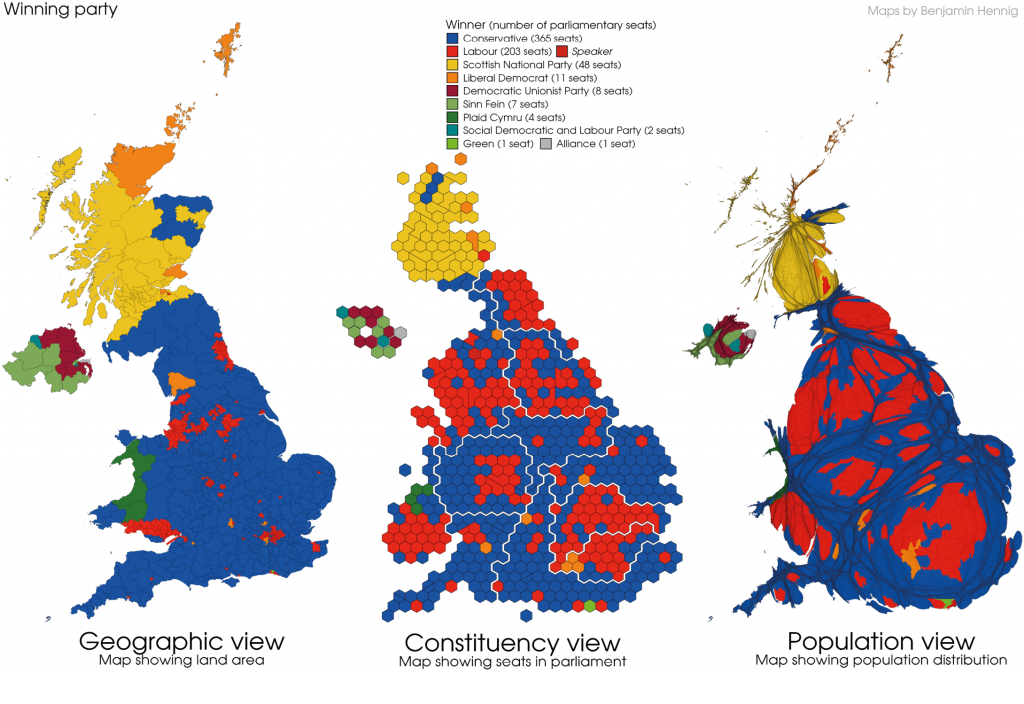
Dr Daniel Jackson
Associate Professor of Media and Communications at Bournemouth University.

Prof Einar Thorsen
Professor of Journalism and Communication at Bournemouth University

Prof Darren Lilleker
Professor of Political Communication at Bournemouth University

Dr Nathalie Weidhase
Postdoctoral Researcher in Media, Culture and Communication at BU
On 23 July 2019 Boris Johnson’s became leader of the Conservative Party, meaning the man who had led the campaign towards Brexit was now to be in charge of its delivery. His first short term as Prime Minister may be remembered for him losing the most votes of any UK Prime Minister, being found to have illegally prorogued Parliament, in doing so misleading the Queen. But he also succeeded in spearheading a renegotiation of the agreement by which Britain would leave the EU, removing the ‘Irish backstop’ that ardent Brexiteers argued locked the UK forever under EU control. Yet there was little chance of this deal getting through Parliament. After a Conservative backbench rebellion in September 2019 to prevent a no-deal exit from the EU Johnson expelled 21 of his own MPs, he had no majority at all. The partners in a supply and demand agreement, the DUP, withdrew support due to the likelihood of a formal border between Northern Ireland and the UK. The rest of Parliament arraigned against him.
Despite calls from within his own party for Labour to oppose Johnson’s call for a general election, Corbyn succumbed. The result was a thumping win for Johnson’s Conservatives with an 80 seat majority, the largest since 1987. Labour fell to its worst showing since 1935. But this was not a ringing endorsement for Johnson, his personal approval ratings were a net -14% on the eve of the election, rarely having a positive rating. Corbyn however had net approval ratings of -30%, Liberal Democrat leader Jo Swinson -44% and Brexit’s Farage -36%. The result of this battle of unpopular political leaders was the Conservatives vote share increased only by 1.2%, Labour’s fall of 7.9% being the significant statistic. Increases for the Liberal Democrats of 4.2% and the Brexit Party’s 2% put paid to Labour’s chances in many seats. Johnson won 56.2% of seats from 43.6% of the votes. 45.6% voted for parties standing clearly on a platform to Brexit, raising some questions about the mandate that Johnson enjoys despite his now iron grip on his party and Parliament. The somewhat equivocal actual vote shares of course cannot take into account tactical votes.
This election has raised countless questions and talking points, which pollsters, journalists, academics, commentators and politicians alike are all busy analysing. This project, and report that follows, is our collective contribution to making sense of the 2019 election. To do this, we have again turned to leading academics in the UK and beyond – a mix of world-leading experts and early career researchers – to offer their reflections, analysis and early research findings on the election campaign.
For election analysts, the talking points of this campaign offered continuities from recent campaigns but will also be remembered for the central role of truth and lying in electoral politics. Accordingly, we devote Section 1 to discussions of the (increasingly uncivil) nature of political discourse during this campaign, the role of misinformation, lies, and the possible consequences for our civic culture.
In Section 2 we turn to voters, polls and results. After a run of difficult elections for pollsters, it seems that 2019 was a better year, with most of them performing well. Turnout, however, was marginally down from 2017, and the supposed ‘youthquake’ of 2017 failed to decisively turn the election this time. Nevertheless, the generational divide between young and older voters is increasingly evident and may shape future elections to come.
Much debate centred on the nations (Section 3). Would Scotland deliver a further boost to the SNP and the campaign for independence? How would Northern Ireland respond to the uncertainty of relations with the Republic, the rest of the UK and the EU post-Brexit? Would Wales reject Labour and would England’s red wall hold up? The election outcome leaves the future of the union in serious question in the coming years.
Sections 4 and 5 draw attention to the campaign strategies the parties pursued and their policy platforms. Here, unlike 2017, Brexit did appear to significantly shape the election outcome, and was the central pillar of the Conservatives’ campaign. As in 2017, Labour tried to shift discussion to ending austerity and investment in public services, but this time it failed to resonate in ways that shifted voting behaviour.
Digital (Section 6) was a major battleground, with Full Fact’s finding that 88% of Conservative Facebook adverts online contained at least some misleading information a stark warning of the dangers that this space poses to democracy. Relatedly, news and journalism (Section 7) came under fire continuously. 2019 saw a record number of televised leader debates. While they are finally now a central staple of election communication in the UK, their formats and organisation are still work in progress. Meanwhile, the right-leaning press intensified its assault from 2017 on Jeremy Corbyn.
Finally, in Section 8 we capture perhaps one of the most interesting dynamics of the election: the interplay between politics and popular culture and the role personality played in the outcome.
Published within ten days of the result, these contributions are short and accessible. Authors provide authoritative analysis – including research findings and new theoretical insights – to bring readers original ways of understanding the campaign. Contributions also bring a rich range of disciplinary influences, from political science to cultural studies, journalism studies to geography. We hope this makes for a vibrant, informative and engaging read.

